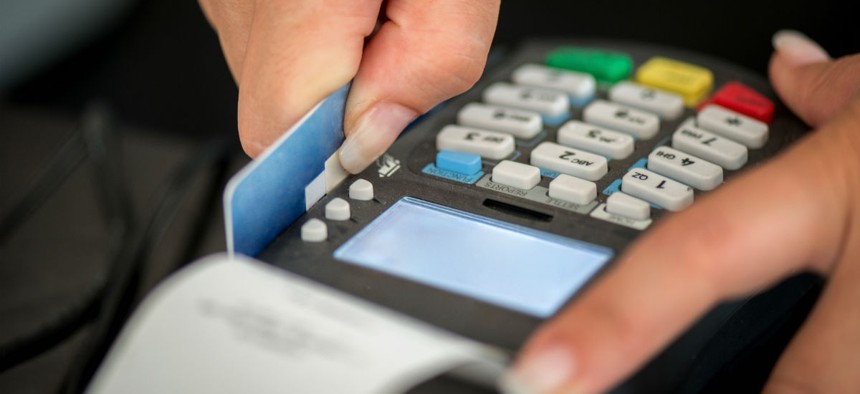
Overspending on Little Things Adds Up to Billions Wasted Across Government
Agencies should identify spending patterns to leverage buying power, GAO says.
Federal agencies are potentially overspending billions of dollars each year by allowing employees to make small purchases on government charge cards instead of using the government's buying power to negotiate discounts, a new report found.
The government has no universal policy requiring agencies to analyze their spending to identify common purchasing areas, which could then allow them to leverage better deals on those transactions. Agencies, the Government Accountability Office found, follow an Office of Management and Budget memorandum to collect data from employees’ purchase cards, but do not use the data to identify spending patterns that would allow for negotiated discounts.
Agencies spend between $17 billion and $20 billion annually through purchase cards. Employees primarily use the cards for “micro-purchases” of $3,500 or less. The General Services Administration manages the cards and agencies can use GSA and bank data to analyze spending. Agencies use the information almost exclusively for identifying misuse and fraud, however.
GAO looked at data from the departments of Defense, Veterans Affairs, Interior and Energy, as well as the Environmental Protection Agency, to identify purchase card practices. Energy and the Pentagon had no departmentwide guidance for analyzing card data. Interior and EPA had identified some savings by examining their data, while some regional VA offices had done the same.
The report defined a proper spend analysis as “providing knowledge about how much is being spent for which products and services, who the buyers are, who the suppliers are, and where the opportunities are for leveraged buying and other tactics to save money and improve performance.”
Agency officials told GAO auditors that purchase card spending was too small to realize significant savings, arguing the cost of analysis would outweigh the benefits. They maintained that a better allocation of resources was to focus on high-dollar contracts. GAO acknowledged that information on purchase card spending is incomplete and not easily organized, but auditors said cleaning up the data was a worthwhile endeavor.
“When totaled across agencies, purchase card spend represents billions of taxpayer dollars that the government has a responsibility to spend wisely,” GAO said. The auditors added “without more focused efforts,” federal agencies may be “missing opportunities to find cost savings.”
Purchase card spending represented between 2 percent and 17 percent of annual outlays at the agencies GAO examined.
GAO cited a VA regional office to demonstrate potential savings, noting an analysis of purchase card data that led the office to negotiate a blanket purchase agreement to buy wheelchair ramps. The contract saved $1.1 million and led to much faster delivery of the the ramps.
The auditors called on VA to share those lessons across the department. They also recommended Defense and Energy issue departmentwide guidance instructing all components and activities to conduct their own analyses, which the departments said they would do. The report encouraged all federal agencies to examine purchase card spending patterns so agencies “may leverage buying power more effectively.”
Sen. Chuck Grassley, R-Iowa, who requested the audit, called on agencies to implement to recommendations as soon as possible.
“It makes sense that the federal government, as a major purchaser of goods and services, should take advantage of its purchasing power to save taxpayer money whenever possible,” Grassley said. “In fiscal year 2015, the government spent about $19 billion using purchase cards, so the potential for cost savings is notable.”
NEXT STORY: Leading Employees Who Struggle with Self-Doubt







